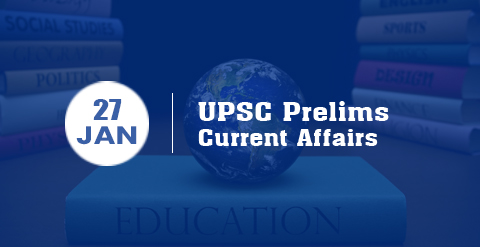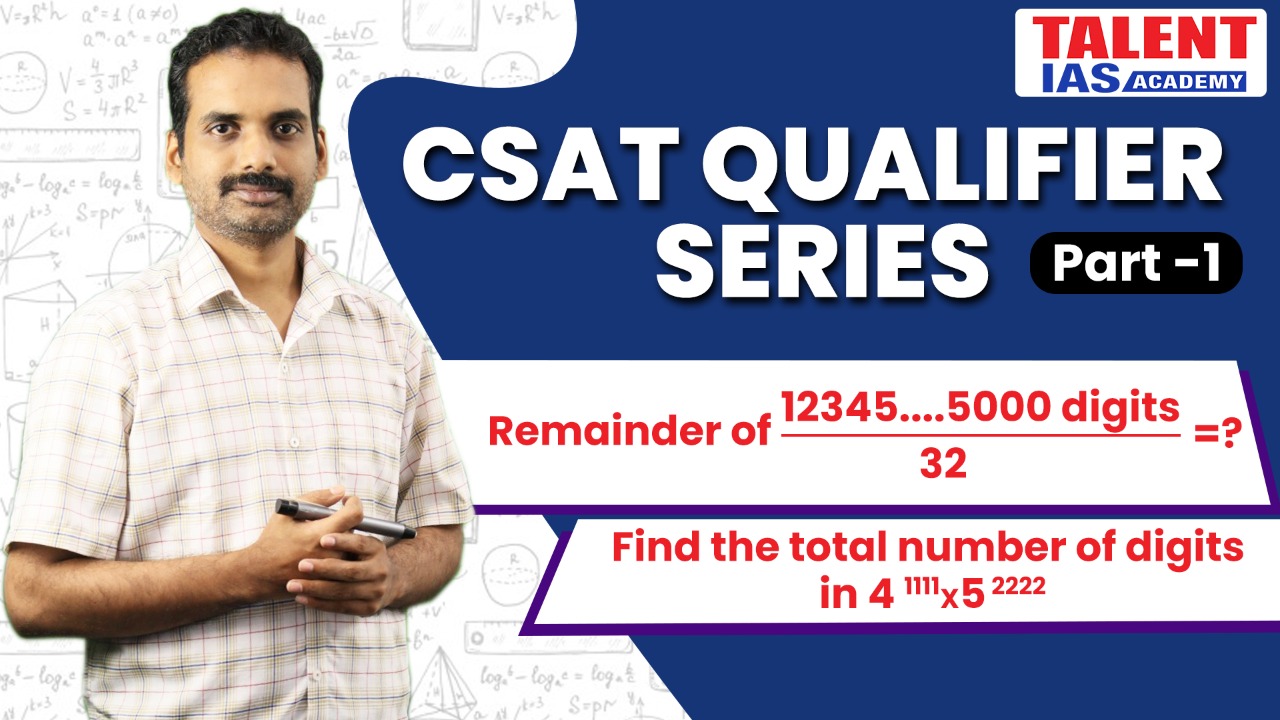Euthanasia
Relevance:
Supreme Court altered the existing guidelines for ‘living wills’, as laid down in Common Cause vs. Union of India & Anr (2018), which allowed passive euthanasia.
News Summary:
- ‘Living will’ is a written document that specifies what actions should be taken if person is unable to make their own medical decisions in future.
- Euthanasia is practice of ending life of a patient to limit the patient’s suffering which can be administered only by a physician.

- 2 types of Euthanasia –
- Active euthanasia involves an active intervention to end a person’s life with substances or external force, such as administering lethal injection. It is allowed in Netherland, Belgium, Canada etc.
- Passive euthanasia refers to withdrawing life support or treatment that is essential to keep a terminally ill person alive. It is allowed in India, Finland, Germany etc.
- Major judgements related to Euthanasia –
- P. Rathinam Case (1994): Struck down section 309 of IPC (attempt to suicide) as unconstitutional.
- Aruna Shanbaug Case (2011): SC allowed passive euthanasia for first time.
- The court specifically stated that “Dignity in the process of dying is as much a part of the right to life under Article 21. To deprive an individual of dignity towards the end of life is to deprive the individual of a meaningful existence.”
Right to Privacy is protected as an intrinsic part of Right to Life and Personal Liberty. Which of the following in the Constitution of India correctly and appropriately imply the above statement? (2018)
- Article 14 and the provisions under the 42nd Amendment to the Constitution.
- Article 17 and the Directive Principles of State Policy in Part IV.
- Article 21 and the freedoms guaranteed in Part III.
- Article 24 and the provisions under the 44th Amendment to the Constitution.
Reference: Hindustan Times
Genetically-engineered trees
Relevance:
US developed and field-tested GE version of American chestnut tree (named as Darling 58) and is awaiting clearances from government agencies to grow them in wild.
News Summary:
- China allowed commercial plantations of two varieties of GE insect-resistant poplar trees.
- India has been experimenting with GE variety of rubber tree by inserting additional copies of gene MnSOD (manganese-containing superoxide dismutase) which enables plant to tolerate extreme climatic stress.
- GE variety will allow non-traditional rubber states (Assam, Mizoram) to cultivate better quality rubber.
- Fungal blight – Cryphonectria parasitica from the Chinese varieties of the tree killed over 4 billion American chestnut trees.
- Darling 58 – GE blight-resistant American chestnut was developed by adding an enzyme from wheat that breaks down the toxin produced by the blight.
About GE trees:
- GE tree is a tree whose DNA has been modified using genetic engineering techniques.
- In most cases, it introduces novel traits to plants which do not occur naturally within species.
- Significance of GE Trees –
- Fight climate change by creating trees that grow bigger, faster, resist disease and enhance carbon sequestration.
- Boost production of products such as biofuels and wood from such trees.
- Economic benefits for timber, pulp and paper industry.
With reference to the Genetically Modified mustard (GM mustard) developed in India, consider the following statements: (2018)
- GM mustard has the genes of a soil bacterium that given the plant the property of pest-resistance to a wide variety of pests.
- GM mustard has the genes that allow the plant cross-pollination and hybridization.
- GM mustard has been developed jointly by the IARI and Punjab Agricultural University.
Which of the statements given above is/are correct?
- 1 and 3 only
- 2 only
- 2 and 3 only
- 1, 2 and 3
Reference: Down to Earth
Project Cheetah
Relevance:
India has signed an agreement with South Africa to translocate 12 cheetahs to the Kuno National Park (KNP) in Madhya Pradesh. Earlier in September 2022, KNP had received eight cheetahs from Namibia.
Project Cheetah:
- Approved by Supreme Court in 2020
- Aim – To reintroduce at least 50 cheetahs over next five years.
- It is world’s first inter-continental large wild carnivore translocation project.
- Nodal Agency – National Tiger Conservation Authority
- Significance –
- Restoring open forest and grassland ecosystems in India.
- Conserve biodiversity and enhance ecosystem services like water security, carbon sequestration etc.
- Enhanced livelihood opportunities for local community through eco-development and ecotourism activities.
About Cheetah:
- It is a keystone species (organism that helps define an entire ecosystem) of dry forests, scrub forests, and savannahs.
- It is the only large wild mammalian species that went extinct from India.
- Protection Status –
- Appendix 1 of CITES
- IUCN status: African Cheetah (Vulnerable) and Asiatic Cheetah (Critically endangered).
- Major Cheetah range countries – Namibia, Botswana, South Africa, Zimbabwe, Angola, Zambia, Tanzania, and Kenya in Africa, and Iran and India in Asia.
Kuno National Park (KNP):
- KNP is situated in Vindhyan Hills in Madhya Pradesh.
- It falls under falls under Kathiawar-Gir dry deciduous forest eco-region.
- Vegetation – Kardhai, Khair and Salai trees.
With reference to Indian elephants, consider the following statements: (2020)
- The leader of an elephant group is female.
- The maximum gestation period can be 22 months.
- An elephant can normally go on calving till the age of 40 years only.
- Among the States in India, the highest elephant population is in Kerala.
Which of the statements given above is/are correct?
- 1 and 2 only
- 2 and 4 only
- 3 only
- 1, 3 and 4 only
Reference: The Hindu
Yellow-band disease
Relevance:
Recently, it is reported that a rapidly spreading disease, commonly known as yellow band disease, is killing corals over vast stretches of the sea floor of Thailand.
Yellow-band disease:
- It turns corals yellow colour before destroying them.
- It was first spotted decades ago and has caused widespread damage to reefs in the Caribbean.
- Causes – Environmental stressors, including increased water temperatures, pollution, and sedimentation, overfishing, increased competition for space from other organisms.
- These weaken the coral and make it more susceptible to infection by pathogens, such as bacteria and fungi.
- The disease’s impact cannot be reversed, unlike the effects of coral bleaching. Also there is no known cure.
“Biorock technology” is talked about in which one of the following situations? (2022)
- Restoration of damaged coral reefs
- Development of building materials using plant residue
- Identification of areas for exploration/extraction of shale gas
- Providing salt licks for wild animals in forests/protected areas
Reference: The Hindu
World Economic situation and prospects 2023 report
- Produced by – United Nations Department of Economic and Social Affairs (UN-DESA) + UN Conference on Trade and Development + 5 UN regional economic commissions.
- COVID-19 pandemic and war in Ukraine battered world economy in 2022.
- World output growth is projected to decelerate from an estimated 3.0 percent in 2022 to 1.9 percent in 2023.
T+1 settlement
- After China, India became the 2nd country in world to start ‘trade-plus-one’ (T+1) settlement cycle in top listed securities.
- Until 2001, stock markets had weekly settlement system, then T+3, and then moved to T+2 in 2003.
- Under T+1, trade-related settlements must be done within a day, or 24 hours, of completion of a transaction.
Open Market Sale Scheme (OMSS)
- Food Corporation of India (FCI) will off load 30 LMT wheat from Central pool stock to market through various routes under OMSS (Domestic).
- Under OMSS, FCI sells surplus stocks of wheat and rice at pre-determined prices through e-auction in open market from time to time.
- Aim – To enhance supply of food grains, especially wheat during lean season and thereby moderate the open market prices.
Tech neck Syndrome
- Other Name – New carpal tunnel syndrome
- New York based doctor stated that smartphones and laptops like tech tools have given rise to a new physical condition called ‘tech neck’.
- It refers to onset of cervical spinal degeneration that results from repeated stress of frequent forward head flexion while we look down at mobile devices and text for longer periods of time.
Earth’s inner core
- Inner core started rotating slightly faster than rest of the planet in early 1970s.
- It had been slowing down before coming in sync with Earth’s rotation around 2009.
- Negative trend i.e., inner core is now rotating slower than surface.
- Predicted next change – mid 2040
Padma Awards
- One of the highest civilian honours of India announced annually on eve of Republic Day.
- 3 categories –
- Padma Vibhushan for exceptional and distinguished service.
- Padma Bhushan for distinguished service of a high order.
- Padma Shri for distinguished service.
- Total number of awards to be given in a year (excluding posthumous awards and to NRI/foreigners/OCIs) should not be more than 120.
- Consists of – A Sanad (certificate) signed by President and a medallion. There is no cash prize.
Jeevan Raksha Padak Series of Awards
- Awards is given to a person for meritorious act of human nature in saving the life of a person.
- 3 categories –
- Sarvottam Jeevan Raksha Padak
- Uttam Jeevan Raksha Padak
- Jeevan Raksha Padak.
- Persons of all walks of life are eligible for these awards.
- It can also be conferred posthumously.








